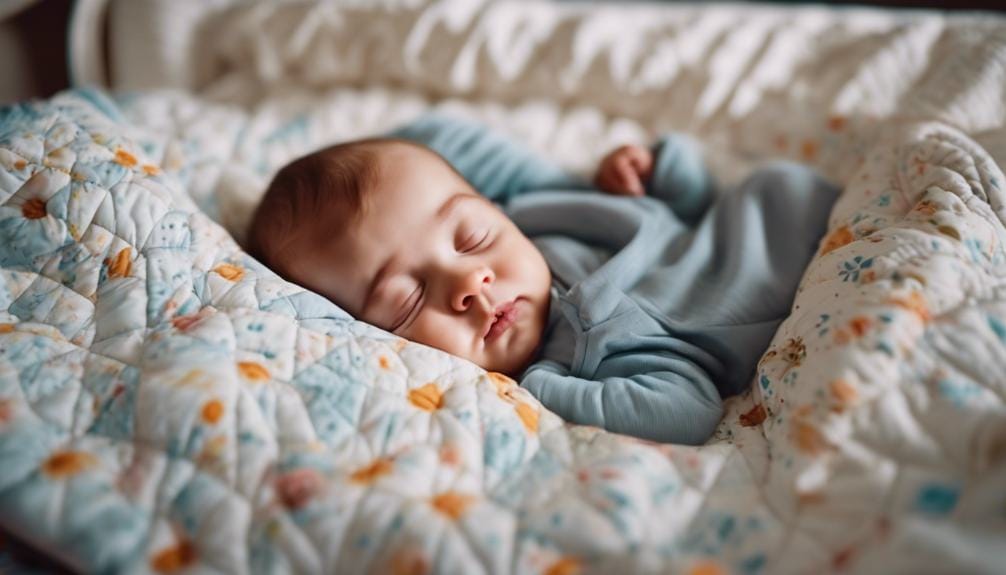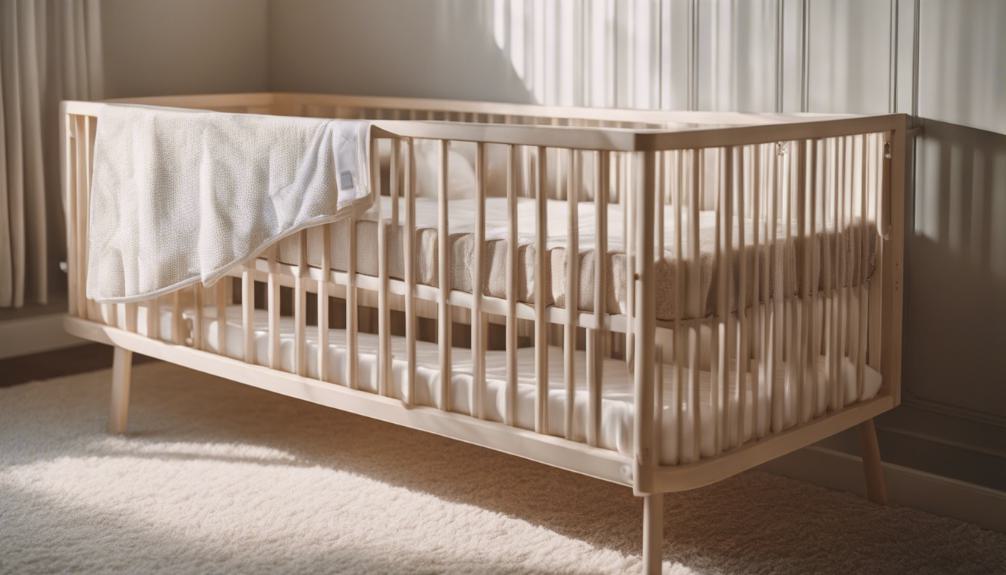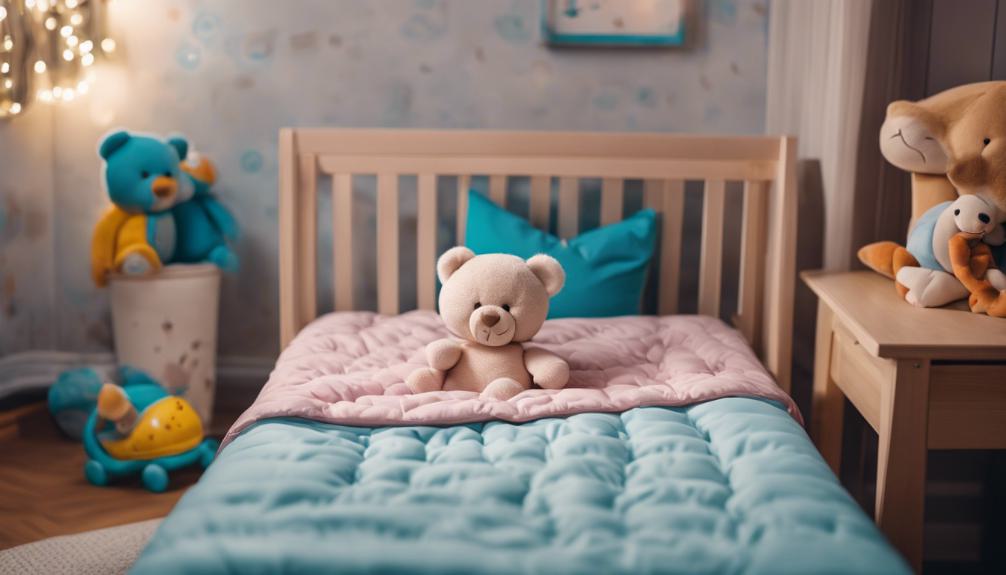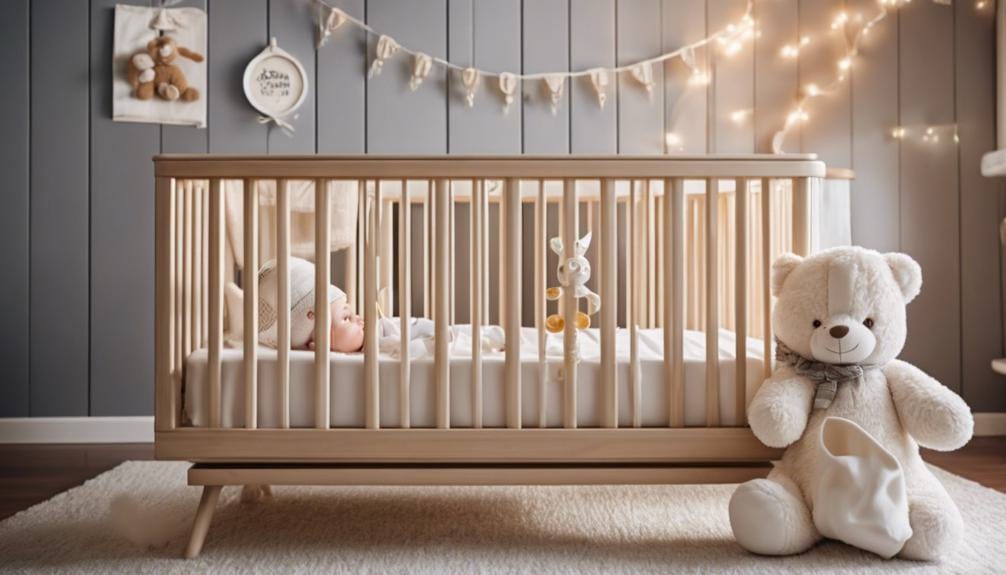Are Cot Quilts Safe for Babies – Safe Sleep Practices
When it comes to the safety of cot quilts for babies, it’s like walking a tightrope between comfort and risk. While the allure of a cozy quilt may be strong, the consequences can be grave.
However, before you dismiss the idea completely, there are crucial factors to consider that might surprise you. It’s essential to understand the potential dangers and explore safe alternatives that prioritize your baby’s well-being.
Key Takeaways
- Cot quilts are not safe for babies under 1 year due to suffocation risks.
- Safe sleep guidelines recommend against using quilts to reduce SIDS risk.
- Baby sleeping bags are a safer alternative to cot quilts for infant sleep.
- Following trusted safety guidelines can help create a secure sleep environment for babies.
Risks of Using Cot Quilts
Using cot quilts in a baby’s crib poses serious risks to their safety and well-being, including the potential for suffocation and an increased likelihood of Sudden Infant Death Syndrome (SIDS). When a baby is placed in a crib with a cot quilt, there’s a risk that the quilt may cover their face, leading to suffocation. This obstruction of the airways can be especially dangerous for infants under 1 year old, who may not have the ability to move the quilt away from their face. Research has shown a concerning link between unsafe bedding practices, such as the use of cot quilts, and infant sleep-related deaths, including cases of SIDS.
To ensure the safest sleep environment for your baby, it’s crucial to adhere to guidelines that recommend against using cot quilts. Instead, opt for a firm mattress with a fitted sheet and avoid using any loose bedding items like cot quilts. By following these safe sleep practices, you can significantly reduce the risk of suffocation and SIDS for your little one. Remember, creating a safe sleep environment is essential for your baby’s well-being and should be prioritized above aesthetic preferences in bedding choices. Prioritizing safety over style when it comes to your baby’s sleep environment is paramount for their health and safety.
Safe Sleep Practices for Babies

When it comes to ensuring your baby’s safety during sleep, adhering to safe sleep practices is paramount, especially in avoiding the use of cot quilts. Safe sleep guidelines strongly recommend against placing quilts or thick blankets in the cot for infants under 12 months to reduce the risk of sudden infant death syndrome (SIDS). It’s crucial that infants sleep on a firm, flat surface without any loose bedding like quilts, which could potentially obstruct their airway during sleep and lead to suffocation.
Research has shown that the presence of quilts, pillows, or soft objects in the sleep area increases the risk of sudden infant death syndrome. Therefore, caregivers are advised to create a safe sleep environment by following these guidelines strictly. The National Institute of Child Health and Human Development’s Safe to Sleep campaign emphasizes the importance of excluding cot quilts from the baby’s bedding to provide a safe sleeping space.
Alternatives to Cot Quilts

Consider opting for baby sleeping bags as a safer alternative to cot quilts for infants. Baby sleeping bags provide a secure and cozy sleep environment for your little one, especially during the first six months when the risk of Sudden Infant Death Syndrome (SIDS) is higher. These sleeping bags reduce the risk of suffocation as they eliminate the need for loose bedding like traditional cot quilts.
To ensure your baby stays at a comfortable temperature while sleeping, choose a sleeping bag appropriate for the room temperature. It’s essential to dress your baby appropriately underneath the sleeping bag, depending on the ambient warmth. If it’s particularly chilly, you can layer your baby with clothing, but always avoid using additional blankets or quilts inside the sleeping bag.
In contrast to cot quilts, which can easily cover a baby’s face and obstruct breathing, baby sleeping bags offer a safer sleep solution. They allow your baby to move their arms and legs freely while still maintaining a cozy environment. For added peace of mind, consider using a baby monitor to keep an eye on your little one as they sleep soundly in their sleeping bag. By choosing baby sleeping bags over cot quilts, you’re prioritizing your baby’s safety and promoting a secure sleep environment.
Guidelines for Cot Bedding Safety

For safe sleep practices for babies, adhere to guidelines for cot bedding safety to reduce the risk of suffocation and Sudden Infant Death Syndrome (SIDS). When setting up your baby’s cot, make sure to follow the recommendations provided by trusted sources like the Lullaby Trust. It’s crucial to create a safe sleeping environment to minimize the risk of SIDS and other sleep-related accidents.
To ensure your baby’s safety, avoid using cot quilts, pillows, or duvets until they’re at least 12 months old. Instead of quilts, opt for lightweight blankets or sleeping bags that can provide warmth without posing a suffocation hazard. Thick quilts can lead to overheating and obstruct your baby’s airway during sleep, increasing the risk of harm.
When placing your baby to sleep, be cautious of any loose bedding that could potentially entangle them, especially during the night when movements are less predictable. By adhering to the guidelines for cot bedding safety and using appropriate bedding materials, you can help create a secure and comfortable sleeping environment for your little one. Remember, following these recommendations is essential in safeguarding your baby’s well-being during sleep.
Ensuring a Secure Sleep Environment

Create a secure sleep environment for your baby by prioritizing a firm, flat mattress and minimal bedding to minimize the risk of suffocation and ensure their safety during sleep. When setting up your baby’s sleep area, follow these essential guidelines:
- Use a small cot or crib: Opt for a crib that meets safety standards and has a snug mattress that fits tightly within the frame. Ensure there are no gaps where your baby could get stuck.
- Avoid crib bumpers: Despite their popularity, crib bumpers pose a suffocation hazard and increase the risk of SIDS. Keep the crib free of soft objects, including bumper pads.
- Say no to loose bedding: Loose bedding such as blankets, pillows, or stuffed animals should be kept out of the crib. Instead, dress your baby in a sleep sack or footed pajamas to keep them warm.
- Transition at the right time: When your baby starts to roll over or shows signs of trying to climb out of the crib, it might be time to transition to a toddler bed. Ensure the new bed is also free of hazards like loose bedding and has guardrails to prevent falls.
Frequently Asked Questions
What Age Can Babies Have Cot Quilts?
Around 12 months old is when babies can start using cot quilts. Waiting until this age aligns with safety guidelines. Parents commonly introduce cot quilts between 18 months to 2 years, considering both comfort and safety for their child.
Are Cot Quilts Safe?
Cot quilts pose suffocation and SIDS risks for babies under 1 year. Safe sleep guidelines advise against using quilts, blankets, or pillows in the sleep area. To keep infants safe, it’s best to avoid cot quilts entirely.
When Can a Baby Have a Comforter in Cot?
When can your baby have a comforter in the cot? It’s safe to introduce a comforter around 12 months. Before then, avoid soft bedding to reduce the risk of SIDS. Consider your baby’s age, weight, and safety guidelines.
Can Babies Have Blankets in Their Cot?
Avoid using blankets in your baby’s cot under 1 year to reduce SIDS risks. Stick to just a fitted sheet as recommended by experts. Introducing quilts or blankets too soon can lead to suffocation hazards and overheating.
Conclusion
In conclusion, it’s crucial to prioritize your baby’s safety by following safe sleep practices and avoiding the use of cot quilts for infants under 1 year old. The risk of SIDS increases with loose bedding, quilts, and pillows in the sleep area.
By providing a firm, flat sleeping surface and keeping the environment free of soft objects, you can create a secure sleep environment for your baby. Prioritizing safety over unnecessary bedding is key to reducing the risk of SIDS.



